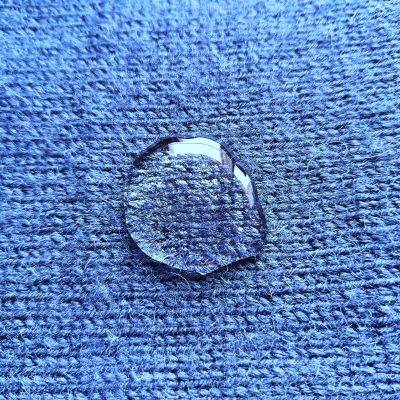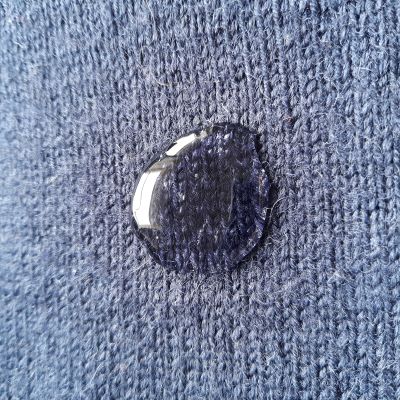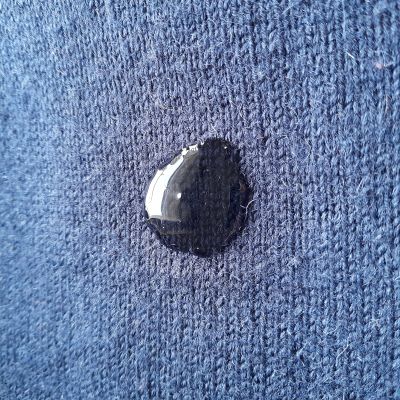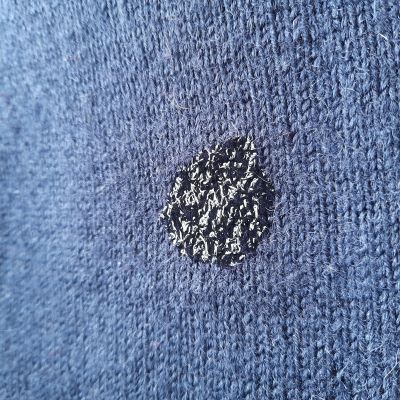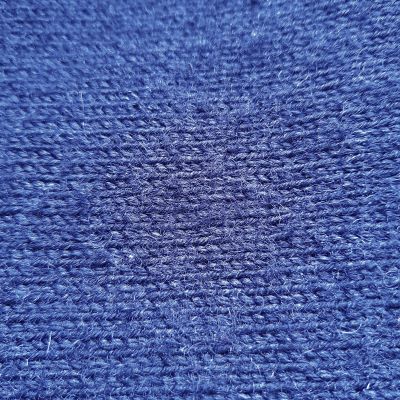Norfolk ganseys
Water resistance tests
Wool is made of an insoluble protein called keratin, like your hair and fingernails. The molecular structure of keratin in wool is a helix, bound together by relatively weak hydrogen bonds. This gives wool its springiness. The molecule is also capable of absorbing water into its chemical structure, so wool is hygroscopic and a kilo of wool can absorb up to 300 ml of moisture (e.g. sweat) into its structure. It also has further water absorption and heat insulation properties due to cavities within the fibre structure.
These properties make it an ideal material for ganseys, while the selection of breeds of sheep with a long staple (long fibres) and combing the fibres parallel to one-another in the worsted spinning process make it ultra hard-wearing, especially when knitted densely with fine needles.
I can attest from personal experience that a densely knitted gansey is wind resistant but I decided to test its ability to 'turn water', as is often trotted out. This may sound counter-intuitive as I stated above that wool is hygroscopic - attracting and absorbing water. But my experiment showed otherwise.
I placed my gansey on a level surface with an absorbant paper kitchen towel beneath a single layer of fabric. It was knitted in 5 ply Frangipani on 2 mm dpns, at about 8.5 spi. It weighs 875 g and is great to wear, every day. I syringed 15 ml of tap water onto the surface and watched. The blob of water stood proud above the surface, with numerous small air bubbles showing underneath. Over the course of the next ten minutes little happened, except that the air bubbles slowly disappeared. Then the height of the blob began to flatten. At 13 minutes the water was clearly being absorbed into the fabric. At 14 minutes it began to sink and penetrated through to the kitchen towel below. I took some fresh kitchen towel and blotted the spot firmly where the water had been. All trace of it disappeared and the wool felt quite dry.
So, densely knitted ganseys are not waterproof but they will resist water for almost a quarter of an hour and they keep out alot of the wind. Even when wet, they still have good insulating properties, keeping the wearer warm. They wick sweat away from the body and dry out quickly with blotting or good air circulation. No wonder they were adopted by fishing fleets so enthusiastically.
